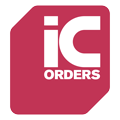Electronic components are the building blocks of electronic systems, from simple gadgets to complex machinery. They are the elements that control the flow of electricity and transform it into useful outputs. This article aims to provide an in-depth understanding of the various parts of electronic components, their functions, and their significance in the realm of electronics.
Basic Electronic Components
Before delving into the complexities of electronic components, it is essential to understand the basic elements that make up most electronic devices. These basic components include resistors, capacitors, inductors, diodes, transistors, and integrated circuits (ICs).
Each of these components plays a unique role in the functioning of an electronic system. For instance, resistors control the flow of current, capacitors store and release electrical energy, while inductors resist changes in current. Meanwhile, diodes allow current to flow in one direction, transistors amplify or switch electronic signals, and ICs are miniaturised electronic circuits.
Resistors
Resistors are one of the most common parts of electronic components. They are used to control the amount of current flowing in a circuit. The resistance value of a resistor is measured in Ohms (Ω).
There are different types of resistors, including fixed resistors, variable resistors, and thermistors. Fixed resistors have a constant resistance value, while variable resistors allow for the adjustment of resistance. Thermistors, on the other hand, change their resistance with temperature.
Capacitors
Capacitors are components that store electrical energy in an electric field. They are often used in electronic circuits to block direct current while allowing alternating current to pass.
Capacitors come in various types, including ceramic, electrolytic, and film capacitors. Each type has its unique characteristics and applications. For example, ceramic capacitors are commonly used in high-frequency circuits, while electrolytic capacitors are used for power supply filtering.
Advanced Electronic Components
While the basic components form the foundation of electronic systems, advanced components bring additional functionality and complexity. These include microprocessors, memory chips, and sensors, among others.
Microprocessors, often referred to as the ‘brain’ of an electronic system, execute instructions to perform operations. Memory chips store data and instructions for the microprocessor. Sensors, on the other hand, detect changes in physical or chemical conditions and convert them into electrical signals.
Microprocessors
Microprocessors are integrated circuits that contain the functions of a central processing unit of a computer. They perform arithmetic and logic operations, control timing, and interact with other devices.
The performance of a microprocessor is determined by factors such as clock speed, bus speed, and the number of cores. Higher values for these factors generally result in better performance.
Memory Chips
Memory chips are electronic components that store data and instructions for the microprocessor. There are two main types of memory: volatile and non-volatile.
Volatile memory, such as Random Access Memory (RAM), loses its data when power is turned off. Non-volatile memory, such as Read-Only Memory (ROM), retains its data even when power is lost.
Understanding Electronic Component Symbols and Diagrams
Electronic component symbols and diagrams are essential tools for understanding and designing electronic circuits. They provide a visual representation of the components and their connections in a circuit.
Each electronic component has a unique symbol. For example, a resistor is represented by a zigzag line, a capacitor by two parallel lines, and a diode by a triangle pointing to a line. Learning these symbols is crucial for anyone interested in electronics.
Electronic diagrams, also known as schematic diagrams, use these symbols to represent the components and their connections in a circuit. They provide a ‘map’ of the circuit, showing how the components are connected and how the current flows.
Conclusion
Understanding the parts of electronic components is fundamental to grasping the workings of electronic systems. From basic components like resistors and capacitors to advanced ones like microprocessors and memory chips, each plays a vital role in the functioning of electronic devices.
By learning about these components, their functions, and how they are represented in diagrams, one can gain a deeper appreciation of electronics and its numerous applications in our daily lives.
Now that you’re equipped with knowledge about the parts of electronic components, take the next step with IC Orders. With over 12 years of experience in the electronic component market, we understand the intricacies of sourcing the right components for your needs. Whether you’re facing opportunities or challenges, IC Orders is your go-to independent distributor. Let us help you find the exact part numbers you need and ensure your Bill of Materials (BOM) is complete. Contact Us for A Quote Today and experience our commitment to your electronic component needs.
